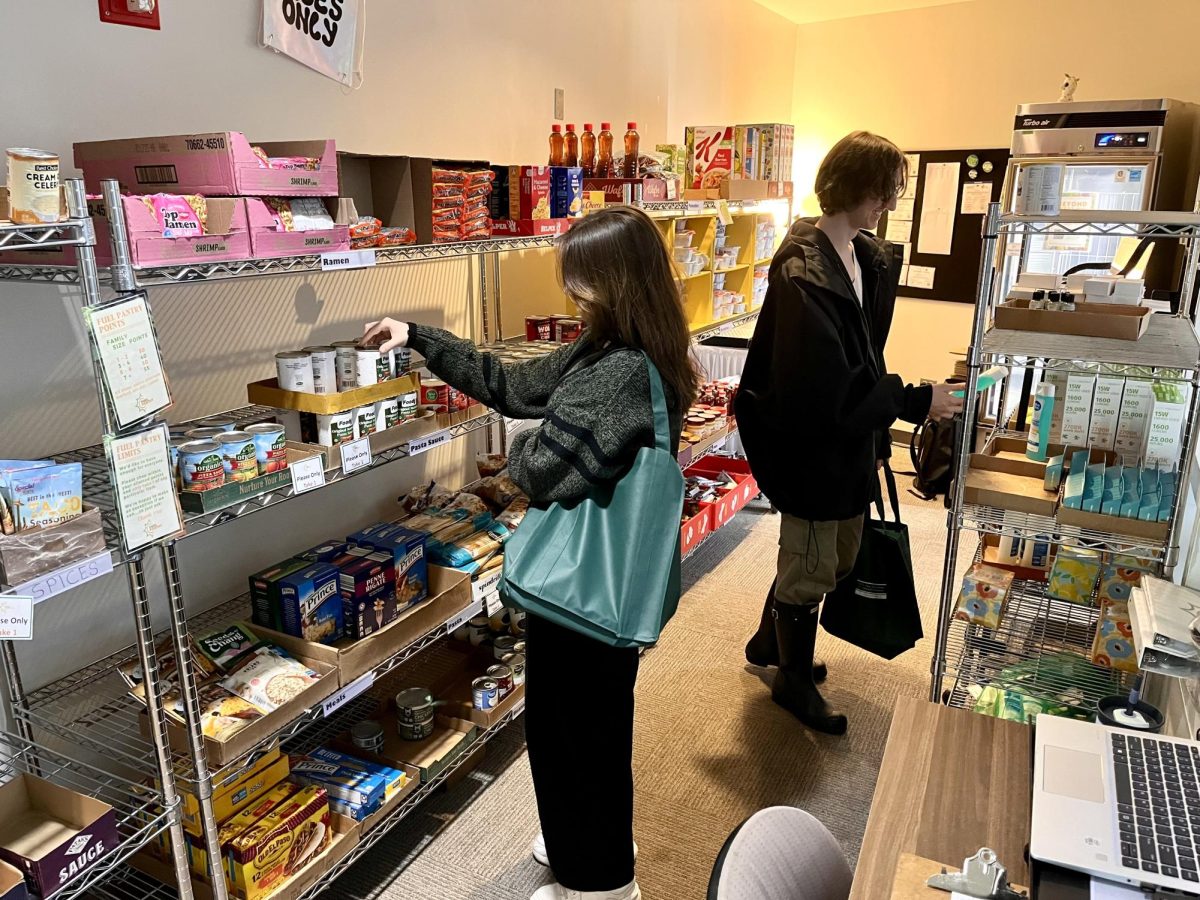“High” schools?
COD hosts drug in schools symposium
Patrick O’Dea, the Drug Enforcement Agency’s Chicago Field Division intelligence manager making a presentation
March 14, 2017
Bill Clayton (not his real name), grew up in a middle-class family, had a good relationship with his parents and younger siblings, scored good grades in high school and also played football. At the age of 15, he had his first experience with drugs as a freshman in high school. At 17, he tried opiates.
Clayton went on to college, and experimented “every other drug under the sun.” Out of college he had a lucrative job, got married and started to raise a family. He vividly recalls losing an uncle who was addicted to heroin.
“I remember saying then that I will never have anything to do with heroin,” said Clayton. “At that time, heroin just started coming around the Chicago area.”
Years later, he was diagnosed with serious back pain. A family doctor gave him a prescription and later suggested surgery, which Clayton declined. Clayton continued “doctor shopping” and bought pills online, something that was once prevalent. His back pain subsided, but it resurfaced years later.
“That led to buying medicine off the streets, for several years it became daily use,” added Clayton.
Clayton remembers being told: “Why are you paying for a pill when you can buy a $5 bag of heroin?”
“That doesn’t make sense; I am a reasonable man,” concluded Clayton. “This was how I was introduced to heroin.”
A serious addiction started, causing his eventual arrest and criminal charges. Today, Clayton recounts, “As a 38-year-old heroin addict, it has been a recovery for four years.”
He is leading the charge to help prevent heroin addiction, by being a success story that a person can overcome drug addiction and avoid conflicts with the law.
Unlike Clayton, many aren’t that lucky to share this success story. According to the Gateway Foundation, an Aurora-based drug and alcohol treatment center, 43 persons died as a result of heroin in DuPage County in 2015.
In 2016, “seventy-eight people overdosed heroin compared to 51 in 2015,” according to the coroner’s office of DuPage County.
In Clayton’s scenario, students across the state are being introduced to drugs in school, and may never be able to recover from this “regional epidemic.”
This necessitated the College of DuPage to include in its 50th-anniversary celebration the first of a three-part series titled “The human condition,” an event named and styled ‘“High” School – Drugs in our Schools” on March 8.
The gathering brought together hundreds of healthcare professionals, counselors working with kids addicted to drugs and community members to the Jack H. Turner conference room to get an outlook on the state’s heroin problem, and to hear from peers about ways this epidemic can be remedied.
“You used to think that children who have basic psychiatric need were exploring the world in search of the solution to their problem, and in most cases, that’s not true,” said Dr. Lukasz Konopka, a neuroscientist, and clinical psychologist at Spectrum Clinic for Integrative Neuroscience, in McHenry, Ill.
“The idea is that kids are very much influenced by their peers, activities, media and home environment,” Konopka continued “So they will go out and try to fit in. It may be true that your friend Edward has been using all types of drugs, and they had very limited effects. But he may have a very different genetic makeup than you. You may do it just once, and you are stuck.
“Now it becomes very difficult to rewind once that film is in play.”
The Gateway Foundation’s lead adolescent clinician, who works with teens struggling with substance abuse, described the current trend on drug addiction among young students. Cassie Taylor outlined how kids abuse drugs through “Xanax crunched in gummy bears” and other ways.
“They will know how to use a drug, and use it very uniquely before any of the adult people will ever get to hear about it,” said Taylor. “If I need to know about a new trend, I will need to go to one of the 15-year-olds in my program rather than any of the adult counselors. Kids want to get high and do whatever they want to do.”
In fact, a doctor recently concluded that a gummy bear candy distributed by two teens to fellow high school students in Naperville contained marijuana. The teens involved have since been charged in connection with this incident.
To put this drug epidemic into perspective, Patrick O’Dea, the Drug Enforcement Agency’s Chicago Field Division intelligence manager, outlined his organization’s pivotal role in stopping drug trafficking. O’Dea provided statistics about what has been going on across the state and other states under his control.
“You have a strong source of supply, a plentiful number of users, high demands and high supply,” said O’Dea. “The result is the street gang and violent crimes, and of course the money changing hands from the heroin addicts to the street gangs.”
There are two remaining series earmarked by the college through its Human Services program. They are “Human Trafficking” scheduled for April 5, and “Domestic Violence” on April 19. Visit http://oucalendar.cod.edu/cal/main/showMain.rdo for updates pertinent to these events.




















